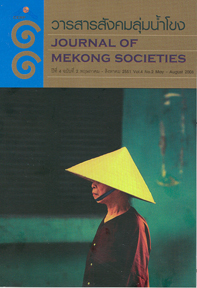Public Participation in Technology Transfer for Watershed Management at Phu Phan National Park and Surrounding Areas
Main Article Content
Abstract
The objectives of this project were to twofold. The first was to study the conditions of and public participation in national resource and environment management. The second was to create a mechanism and model for public participation in technology transfer for watershed management. The samples consisted of both national resource dimensions and human dimensions. Forest resources were studied with stratified random sampling. Land utilization was studied with satellite data processing methods. Water quality was studied using standard methods for examining water and wastewater. The human dimension was studied through questionnaires from three representative groups: 1) community representatives, teachers, monks, and local leaders; 2) provincial academics, and 3) national specialists. The data was analyzed through the statistical methods of percentage, mean, and standard deviation. The results were as follows. In the national resource and environmental dimensions, the areas of 1,015 rai were in watersheds 1A and 1B, indicating a high risk of crisis condition of land utilization. The forest consisted of many kinds of trees, comprising an area of 4,651,516.75 cubic metres, and increasing 96,978.53 cubic metres per annum. The people required 79,774.72 cubic metres per annum, means that natural balance are at risk The physical, chemical, and biological characteristics of water quality met the standard criteria. The surface water quality was classified as type 3 in some watersheds and during some periods it was above the standard criteria. Insecticides were not found at every station. The potential of water quality was at risk. Regarding to the human dimension, the people had a high level of knowledge about conservation , a low level of activity, and a high level of participation in presenting ideas, practices, evaluation, and public relations. The mechanism of participation was created though integration. The national resource and human dimensions were analyzed with SWOT, indicating three strategies, 42 methods, and 46 projects, within 15 years. The budget of 488.85 million baht, classified as BCR 3.23, NPV 747.23 million baht, and IRR of 30.00, was a valuable investment.

